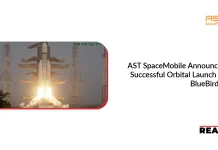GE Aerospace and NASA are partnering on a series of unique flight tests to help further the aviation industry’s understanding of contrails, using new test methods and technologies.
Contrails are clouds made of ice particles, which can be created when airplanes fly through cold, humid air. Persistent contrails are estimated to have a warming climate impact. Flight tests will support industry research efforts to better understand contrail science and enable new technology development that can reduce non-CO2 emissions.
Flights for the Contrail Optical Depth Experiment (CODEX) will be conducted the week of November 18 from Virginia. NASA Langley Research Center’s G-III aircraft will follow GE Aerospace’s Flying Test Bed in the sky and scan the aircraft wake with Light Detection and Ranging (LiDAR) technology. This will advance the use of LiDAR by NASA to generate three-dimensional imaging of contrails to better characterize how contrails form and how they behave over time.
For GE Aerospace, this represents new operating methods for its 747 Flying Test Bed, expanding capabilities ahead of flight tests planned this decade to evaluate performance of new commercial engine technologies. Open Fan, advanced combustion designs, and other propulsion systems are being developed through CFM International’s Revolutionary Innovation for Sustainable Engines (RISE)* program.
Also Read: Airbound Raises $1.7M for Global Drone Delivery
“GE Aerospace is proud to once again team up with NASA to be at the forefront of innovation for the future of more sustainable flight,” said Arjan Hegeman, general manager of future of flight technology for GE Aerospace. “Understanding how contrails act in-flight with the latest detection technology is how we move innovation forward. These tests will provide critical insight to advance next generation aircraft engine technologies for a step change in efficiency and emissions.”
GE Aerospace and NASA have partnered for more than 50 years to accelerate the introduction of new innovations to the aviation industry.
“NASA is advancing the scientific understanding of contrails to improve our confidence in future operational contrail management decisions that consider overall climate impact and economic trades,” said Dr. Rich Wahls, manager of NASA’s Sustainable Flight National Partnership. “We are thrilled to once again work with our collaborator, GE Aerospace, on this first-of-its-kind flight experiment.”
Chief technology officers across the aviation industry called for more government research programs at the Farnborough International Airshow in July to enhance understanding of aviation non-CO2 effects, such as contrails, nitrogen oxides (NOx), sulfur, aerosols, and soot.
Weather prediction
NASA, German Aerospace Center (DLR), and SATAVIA will collaborate on atmospheric forecasting to identify conditions favorable for studying contrail formation.
DLR will help predict the altitude and dimensions of contrail forming regions and their evolution, required to guide the aircraft into fast-moving contrail regions. After the flight tests, the contrail model can be validated with LiDAR observations to advance contrail prediction capabilities.
SOURCE: PRNewswire




